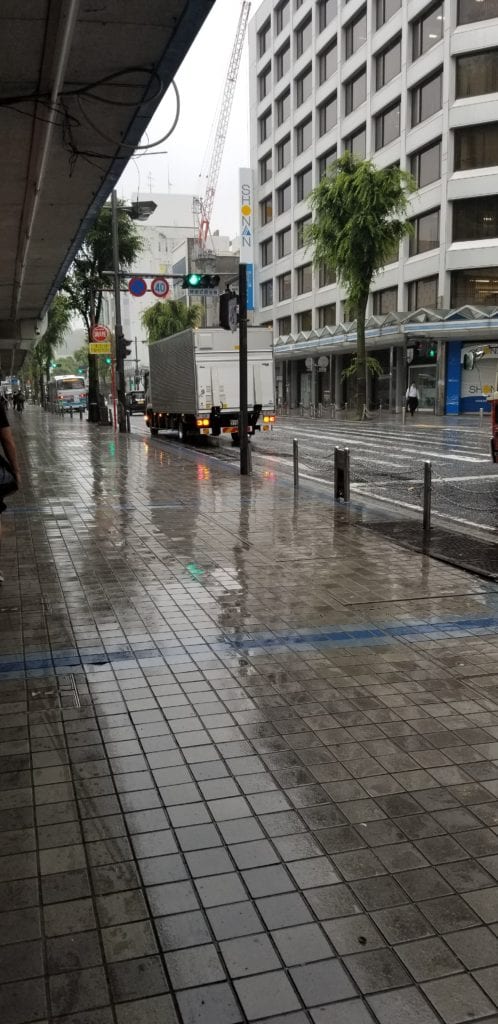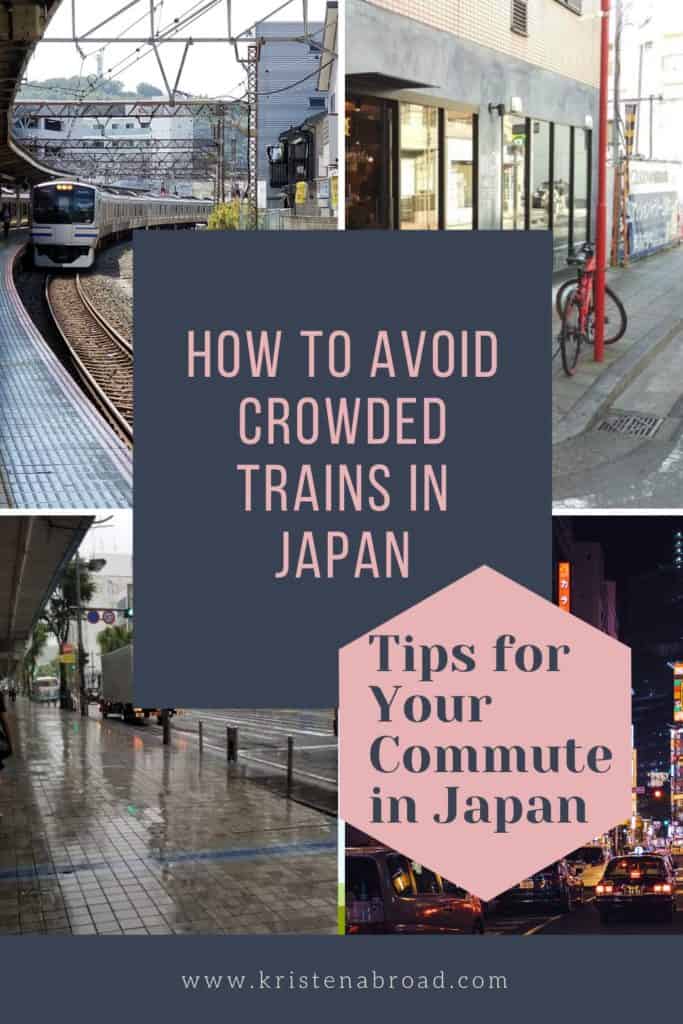How long your commute in Japan is can vary greatly depending on if you are in a big city or countryside. Let’s also be realistic, everyone likes to avoid crowded trains in Japan – I don’t know anyone that likes to be packed in by the train pushers! While most people commute in Japan by train, there are also those that drive and (in my opinion) the lucky that can bike or walk. They all have their pluses and minuses and some of these tips can help out with everyday tourists. What’s the best way for commuting in Japan?
- Japanese words for Commuting: A Quick Japanese lesson
- 通勤時間: Commuting time in Japan
- Commute in Japan by Train
- 通勤手当: Commuting allowance in Japan
- Don’t be a nuisance on your train commute
- Avoiding getting smushed on the train in Japan
- Most congested train lines in Tokyo
- Commuting by car in Japan
- Walking (or running) to work in Japan
- Biking to work in Japan
- What’s your favorite way to commute in Japan?
[Editor’s Note: This post was originally published in June of 2018 and has been updated for freshness, accuracy and comprehensiveness.]
Japanese words for Commuting: A Quick Japanese lesson
There are all sorts of ways to talk about commuting in Japanese. The main kanji for all of this is 通, usually pronounced “tsu-u”, つう (on-yomi or “chinese” reading) or “ka-yo”, かよ (kun-yomi, the Japanese reading).
A good majority of the time you see 通, it will have something to do with commuting. Here’s a few:
- 通い – かよい, kayoi – commuting
- 通学 -つうがく, tsuugaku – commuting to school
- 通勤 – つうきん, tsuukin – commuting to work
- 通勤時間 – つうきんじかん, tsuukinjikan – commuting time
- 通勤手当 – つうきんてあて, tsuukinteate – commuting allowance
通勤時間: Commuting time in Japan
Commuting time in Japan is such an important topic that when looking for housing, it is always a listed characteristic. “6 min walk to X train station”, “40 minute commute to Tokyo”.
Rightfully so, when you figure that the average commuting time in Tokyo is 49 minutes.
Disclosure: Kristenabroad.com is a participant in the Amazon Services LLC Associates Program and other affiliate programs. For some links to products or services in this article, I may earn a small commission by you using my link. The price for you is not affected.
Commute in Japan by Train
The best part about this? You can combine your love of walking OR biking with it, provided you have the correct gear to get your bike on the train (must be in a bag in Japan).
Some people even take the shinkansen to work! (At least part way)
通勤手当: Commuting allowance in Japan
It should be noted if you are contemplating moving to Japan, that most companies include a “commuting allowance” similar to what they do to promote public transportation in large cities in the US, my reference point.
It is also tax-exempt to a certain point and might be something you take into account when you consider your options for your commute in Japan.
Don’t be a nuisance on your train commute
Every year the Japan Private Rail Association conducts a survey on top train habit annoyances. There are 18 different categories which are further broken down in sub-rankings. The top for 2019 were:
- People not knowing how to sit properly (don’t stretch out, offer your seat to elderly/pregnant, take up only the required room)
- Manners for getting on and off (don’t block the door!)
- Not knowing how to hold and store luggage (if you have a backpack, wear it on your front, put it in the overhead or at your feet but not in others way).
The rankings come out a little bit different every year but it’s important to mind your manners when riding the train.
Avoiding getting smushed on the train in Japan
If you are near a big city in Japan, it’s pretty common knowledge that the trains can get packed. We’ve all seen the videos of the professional train pushers, or oshiya (押し屋), shoving people into crowded trains in Japan.
The Japan Ministry of Land, Infrastructure, Transport and Tourism (MLIT) has a standard for congestion rate that can help you understand what to expect on your commute in Japan.
- 100% Capacity is defined as everyone can be seated, hold on to a hand strap, or the pillars near the door
- 150% you can still spread and read the newspaper comfortably but it’s getting a bit busier
- 180% you are forced to fold your newspaper but you can still read (anyone else seriously love this is the comparison factor?!). This is the upper limit of “comfort” on your ride
- 200% you’re now very close friends with your neighboring passengers but you could “still read a weekly magazine” (e.g. you can still get your phone)
- 250% you are packed like sardines and can’t move anything except for the movement of the train is your movement
Most congested train lines in Tokyo
How to have the best commute in Japan? Avoid the most crowded trains in Japan! I would also suggest this for those that would like to avoid this during your trip to Japan. The MLIT conveniently rank the top most congested train lines! From a recent study, these are all above the 180% mark, making them not comfortable for reading:
- Tokyo Subway Tozai Line: 199%
- JR East Keihin Tohoku Line: 186%
- JR East Sobu Line: 197%
- JR East Saikyo Line: 185%
- JR East Yokosuka Line: 196%
- Tokyu Denentoshi Line: 185%
- JR East Nambu Line: 189%
- JR East Chuo Rapid Line: 184%
- JR East Tokaido Line: 187%
- JR East Sobu Rapid Line: 181%
- Tokyo Nippori Toner Liner: 187%
Average across the board top 3 most congested metropolitan train systems are Tokyo at 163%, Nagoya and Osaka come in 2nd and 3rd place with 131% and 125% averages.
Commuting by car in Japan
Driving has its place, maybe you need to run an errand after work and don’t want to lug your purchases around by hand (I’m talking to you, craft beer purchases). There are, however, what feels like a bazillion lights on the “surface roads”, and if you need to (or it’s more efficient time-wise) take the highways to work, the toll fees add up FAST.
All highways in Japan are tolled. More reason to take the train when you are going places. Not to mention, gas is expensive, too.
The amount you are allowed to claim for driving a car for your commute in Japan is based off your travel distance so that is something to note as well.
Walking (or running) to work in Japan
Who else loves walking to work? Gets you fresh air and a bit of exercise first thing in the morning and ready for your day. If you are a convenient distance to your place of work, this is a very common method of commute in Japan. It makes it nice that you can even tie in your training for a road race as part of your commute!
One downside? It likes to rain in Japan, in and out of the rainy season. Having good rain gear is a must! I prefer a light jacket that I can fold up neatly and carry around that is multi-purpose – i.e. it also works well for running.
With preparation, running is also an option! Get a good running backpack like the options from Nathan and you’re on your way.

Biking to work in Japan
Biking as a commute in Japan option goes right along with walking to work as an excellent way to mix exercise in with your commute. Make sure you have proper lights and know the rules of the road. In general, it’s unlawful to ride on the sidewalks. Some exceptions to that are if it is marked for cyclists, or you are younger than 13 or older than 70.
A word of caution past the typical “be aware of your surroundings”. Watch out for tile and grating, it’s super slick in wet weather. I use to ride an elevator through a mountain to the top of my neighborhood (yeah, that was awesome) and there was tile right outside where you used your key to open the door. More than once my bike came out from under me, super awesome with clip-in shoes…
What’s your favorite way to commute in Japan?
Leave me a comment below!

